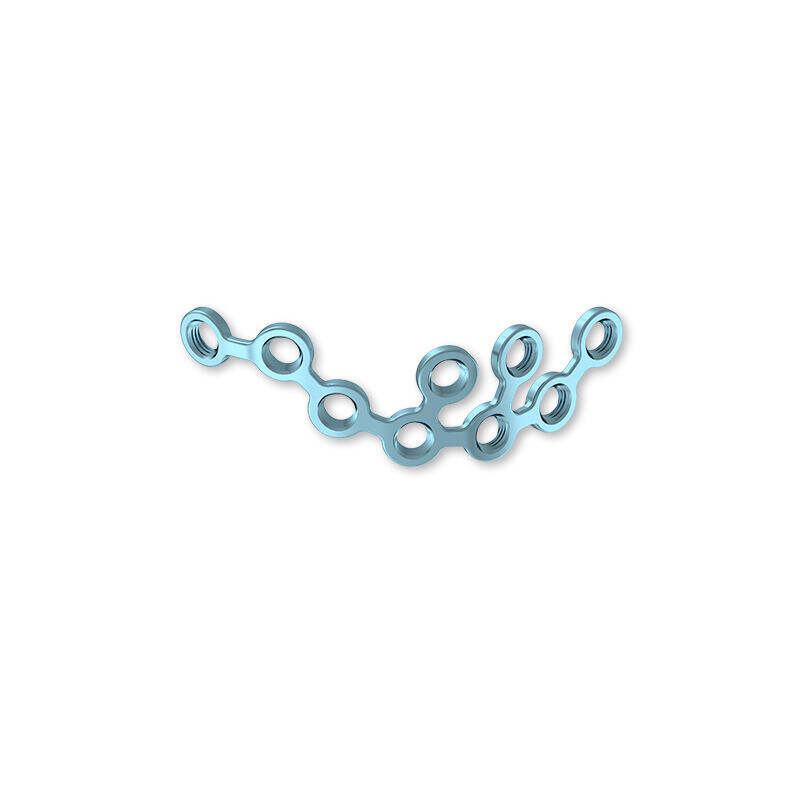Introduction
Orthopedic bone screws have changed how you recover from fractures. These screws stabilize broken bones, allowing them to heal faster and more effectively. Surgeons rely on their precision to align bones properly. This tool ensures your treatment is both reliable and efficient, giving you the best chance at regaining mobility and strength.
What Are Orthopedic Bone Screws?
Definition and Purpose
Orthopedic bone screws are specialized medical devices used to repair broken bones. These screws hold fractured bone fragments together, ensuring they stay aligned during the healing process. You can think of them as tiny tools that stabilize your bones, much like screws hold pieces of wood together in carpentry. Their primary purpose is to provide stability and support, allowing your body to heal naturally and efficiently.
Surgeons use these screws because they offer precision and reliability. They help restore the original shape and function of your bones. Without proper stabilization, fractures may heal incorrectly, leading to long-term complications. Orthopedic bone screws play a critical role in preventing this.
Types of Orthopedic Bone Screws
Orthopedic bone screws come in various types, each designed for specific needs. Some common types include:
- Cortical screws: These are used for dense, hard bone areas like the outer layer of long bones.
- Cancellous screws: These work best for softer, spongy bone tissue found inside bones.
- Cannulated screws: These have a hollow center, allowing surgeons to guide them with precision.
- Locking screws: These provide extra stability by locking into a plate, often used in complex fractures.
Each type serves a unique purpose, ensuring your treatment is tailored to your specific injury.
Common Applications in Fracture Treatment
Orthopedic bone screws are used in many fracture treatments. They are commonly applied to repair broken arms, legs, hips, and even small bones like those in your wrist or ankle. Surgeons also use them in spinal surgeries to stabilize vertebrae. In some cases, screws are combined with plates or rods for added support.
These screws are essential for treating fractures that involve multiple fragments or require precise alignment. They help you regain mobility faster by holding the bones securely in place. Their versatility makes them a cornerstone of modern orthopedic care.
How Orthopedic Bone Screws Work
Mechanics of Stabilizing Fractures
Orthopedic bone screws stabilize fractures by holding broken bone fragments together. When a bone breaks, the fragments can shift out of place. These screws act like anchors, securing the pieces in their correct positions. Surgeons insert them into the bone with precision, ensuring the fragments stay aligned. This alignment prevents further movement, which is essential for proper healing.
The screws work by creating compression between the bone fragments. This compression increases stability and reduces the risk of gaps forming between the pieces. You can think of it as tightening a bolt to hold two parts firmly together. This stability allows you to move more confidently during recovery without worrying about the fracture worsening.
Role in Promoting Bone Healing
Stability is key to bone healing, and orthopedic bone screws provide just that. By keeping the bone fragments in place, these screws create an environment where your body can focus on repairing the damage. The compression they provide encourages new bone growth, which bridges the gap between the fragments.
Your body naturally produces cells that rebuild bone tissue. The screws ensure these cells work in the right areas by maintaining alignment. This process speeds up healing and reduces the chances of complications, such as delayed union or nonunion of the fracture.
Importance of Proper Placement
Proper placement of orthopedic bone screws is critical for their effectiveness. Surgeons carefully plan where to insert the screws to avoid damaging nearby nerves, blood vessels, or soft tissues. They use imaging tools like X-rays or CT scans to guide the placement.
Incorrect placement can lead to complications, such as improper alignment or reduced stability. This could slow down your recovery or even require additional surgery. When placed correctly, these screws provide the support your bones need to heal efficiently and safely.
Tip: Always follow your surgeon's advice during recovery to ensure the screws function as intended. Proper care can make a big difference in your healing process.
Benefits of Orthopedic Bone Screws
Enhanced Stability and Precision
Orthopedic bone screws provide unmatched stability during fracture treatment. These screws hold bone fragments securely in place, ensuring proper alignment throughout the healing process. Their design allows surgeons to position them with pinpoint accuracy, which minimizes the risk of misalignment. This precision helps restore the natural shape and function of your bones.
You benefit from this stability because it reduces the chances of the fracture shifting or worsening. Whether you have a simple break or a complex injury, these screws ensure your bones stay exactly where they need to be. This level of precision makes them a trusted tool in modern orthopedic care.
Faster Recovery and Improved Mobility
Stabilized fractures heal faster, and orthopedic bone screws play a key role in this process. By keeping the bone fragments aligned, these screws create the ideal conditions for your body to repair itself. The compression they provide encourages new bone growth, which speeds up recovery.
With faster healing, you can regain mobility sooner. These screws allow you to start physical therapy earlier, which strengthens your muscles and improves joint function. This quicker recovery means you can return to your daily activities with less downtime.
Reduced Risk of Complications
Orthopedic bone screws lower the risk of complications during and after treatment. Properly aligned bones heal more effectively, reducing the chances of delayed healing or improper union. These screws also minimize the need for additional surgeries by providing long-term stability.
Surgeons carefully place the screws to avoid damaging nearby tissues, which helps prevent issues like nerve or blood vessel injury. When used correctly, these screws ensure a safer and more reliable recovery process for you.
Note: Following your surgeon’s post-operative instructions is essential to avoid complications and ensure the screws work as intended.
Innovations in Orthopedic Bone Screw Technology
Bioabsorbable Screws
Bioabsorbable screws represent a significant advancement in fracture treatment. These screws dissolve naturally in your body over time, eliminating the need for a second surgery to remove them. Made from materials like polylactic acid or polyglycolic acid, they provide the same stability as traditional metal screws during the healing process. Once your bone heals, the screws gradually break down into harmless byproducts that your body absorbs.
You benefit from bioabsorbable screws because they reduce the risk of long-term complications, such as irritation or infection caused by retained hardware. They are especially useful in pediatric patients, where removing screws later could disrupt growing bones. This innovation offers a more convenient and patient-friendly approach to fracture care.
3D-Printed Designs
3D-printed orthopedic bone screws are transforming how fractures are treated. These screws are custom-made to match the unique shape and size of your bone. Using advanced imaging, surgeons can design screws that fit perfectly, improving the precision of your treatment.
The customization of 3D-printed screws enhances stability and reduces the risk of complications. You also benefit from faster production times, which means quicker access to the tools needed for your surgery. This technology ensures that your treatment is as personalized and effective as possible.
Smart Screws with Integrated Sensors
Smart screws take orthopedic bone screws to the next level by incorporating tiny sensors. These sensors monitor the healing process in real time, providing valuable data to your surgeon. They can measure factors like pressure, temperature, and bone growth, helping your doctor adjust your treatment plan if needed.
With smart screws, you gain the advantage of a more precise recovery process. Your surgeon can detect potential issues early, such as delayed healing or excessive stress on the bone. This proactive approach improves your chances of a smooth and successful recovery.
Orthopedic bone screws have changed how fractures are treated. They provide stability, speed up healing, and improve outcomes. Advancements like bioabsorbable and smart screws make them even more effective. As technology evolves, you can expect these tools to play a bigger role in improving recovery and quality of life.
FAQ
What happens if an orthopedic bone screw breaks?
If a screw breaks, your surgeon evaluates the situation. They may replace it or leave it if it doesn’t affect healing. Follow-up care ensures proper recovery.
Are orthopedic bone screws permanent?
Not always. Some screws stay in place permanently, while others, like bioabsorbable screws, dissolve over time. Your surgeon decides based on your specific treatment needs.
Can you feel orthopedic bone screws inside your body?
You usually don’t feel them. However, some people experience mild discomfort. If this happens, consult your surgeon for advice or possible adjustments.
Tip: Always communicate any unusual sensations to your doctor for the best care.

